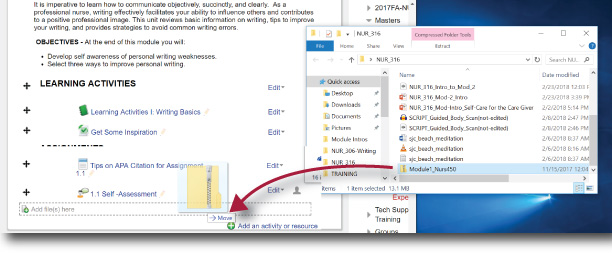PowerPoint Best Practices
1. SIMPLIFY YOUR LAYOUT:
Select a high contrast theme, that offers easy readability. Large sans serif fonts are easier to read when viewed on screens and devices. Remember light text on a colored background can be difficult to read for those with visual impairments, low quality device screens, or people seated far from the screen on which your presentation appears.
2. SIMPLIFY YOUR CONTENT:
Text & Bulleted Lists: If you have a lot of content, there’s no need to try to fit everything onto one slide. Break up a text heavy page into multiple slides. The same goes for bulleted lists: group like items together and don’t be afraid to turn one single text heavy slide into 3 or 4.
Animations: When it comes to animations and transitions, keep it simple. A fade between each slide is absolutely fine. Whichever animation you chose, be consistent and use it throughout the entire powerpoint.
3. PRACTICE
Each presentation that you give is an opportunity to share your expertise, show your value, and educate your audience. Don’t plan to read verbatim every word of your presentation. A well developed and delivered presentation includes eye contact and making connections with your audience. This means that you practice your delivery beforehand and use the on-screen presentation to support your compelling and persuasive argument.
4. CHOOSE QUALITY, RELEVANT IMAGES
Any images that you include in your presentation should help support your thesis and illustrate your points. Try to steer clear of clip art.
5. USE THE NOTES PANE TO YOUR ADVANTAGE
If you have a lot of information that needs to be conveyed, place that in the notes pane. This helps you when presenting both live and in a video/recorded setting. While you should not read the words that the audience sees on their screen, it’s useful to have your “script’ placed in the notes.
- Written notes help you stay on track and cover all of your points
- When printing your presentation as a handout or review tool, your notes serve as a transcript which meets the ADA accessibility legal standards
Remember, your audience does not want to, nor will they, read a ton of text presented on your slides… this is not story time. The visual slides are there to provide cues that support your professional oral presentation. They are secondary and supporting. You are the star of any presentation that you give.

